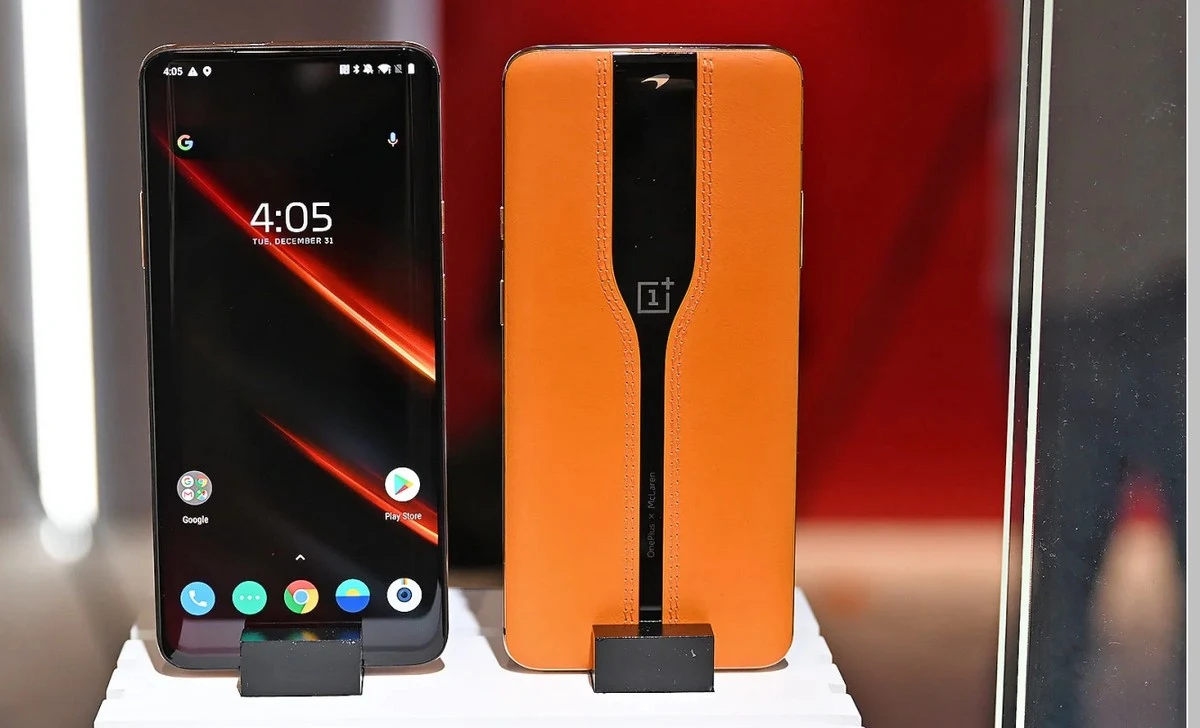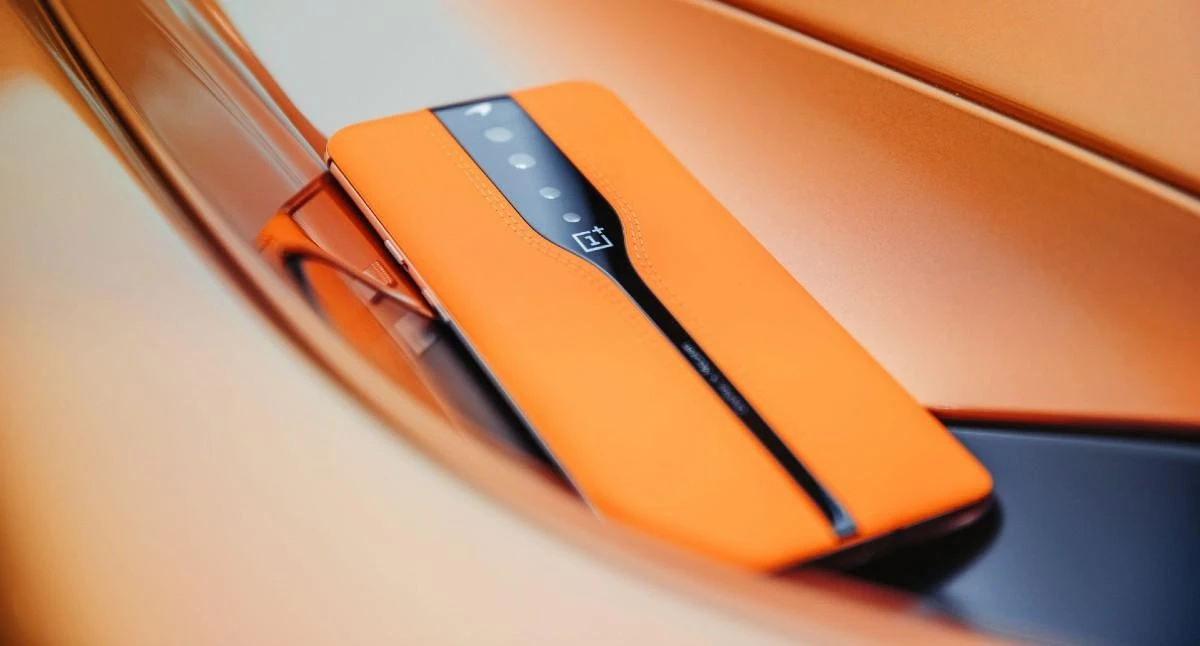ONEPLUS has unveiled its prototype smartphone, the OnePlus Concept One, at CES 2020. The OnePlus Concept One is a concept smartphone put together by OnePlus specifically for CES 2020.
The Shenzhen-based company, attending the Las Vegas-based tradeshow for the first time, wants to showcase some of the technologies that it’s working on for its future flagship smartphones.
The OnePlus Concept One is all about the exterior. And what an exterior it is! OnePlus has heralded the OnePlus Concept One as a “bold exploration for us and what is possible”.
In many ways, the Concept One is an extension of what we’ve already seen from the smartphone firm. The design borrows the trademark Papaya Orange from British motor brand McLaren, which has teamed up with OnePlus in the past for two limited edition smartphones, for the leather back that runs either side of the camera array on the rear panel.
“At McLaren we select the best quality leathers produced in the UK, Ireland and Scotland. The soft grained semi-aniline leather, is soft to touch, and due to the nature of the natural grain this creates a beautifully silky haptic.Leather exudes luxury therefore was one of aspects of this OnePlus concept device that we were keen to offer our input. Our design at McLaren embraces the natural features of the leather through the subtle grain variation which adds character to each car – making each McLaren completely unique and therefore making this OnePlus concept device follow in a similar unique path.”
Jo Lewis, Colour and Materials Design Manager at McLaren Automotive
The headline feature of the OnePlus Concept One is easily the disappearing cameras.
OnePlus’ prototype uses “electrochromic glass” to enable this nifty little feature. Like the windows on a Boeing 787 Dreamliner, which shift to darker colours to block out light instead of using the flimsy plastic shutters you’ll find on other aeroplane windows, the glass changes from clear to opaque to hide the cameras on the back of the smartphone.
OnePlus has updated its OxygenOS mobile operating system, which is a very slightly-tweaked version of Google’s Android software that runs on all OnePlus smartphones, to automatically hide the cameras whenever they’re not in use.
As soon as you switch to the camera app, the glass will shift shades and reveal the triple-camera set-up that takes up a large portion of the back of the handset.
To enable the design, OnePlus had to create the thinnest Electrochromic Glass ever seen. In total, the ultra-thin glass takes 0.7 seconds to switch from dark to light, so the fancy new glass shouldn’t stop you from getting the perfect shot.
Given smartphone manufacturers (including OnePlus) continued push to add more lens to the back of their handsets in a bid to enable new functionality – lossless zoom, artificial bokeh-style blur for Portrait Mode shots, ultra-wide angles – the back of modern flagships are starting to look more than a little crowded.
OnePlus said the intention behind its record-breakingly thin Electrochromic Glass was to find a way to response to customers’ criticism of ugly smartphone lenses. With the company predicting that flagship smartphones will sport five or six separate cameras in their arrays in the next few years, it believes it has found an elegant solution to the problem.

According to the Shenzhen-based company,
OnePlus is the first in the industry to explore the applications of electrochromic glass in smartphones. By exploring innovative ways to combine cutting-edge technology and smartphones, OnePlus is again boldly challenging the conventional practices of the industry. The glass on the OnePlus Concept One uses organic particles to create various tints in colour when subject to an electrical field. When a different voltage is applied, the light transmission properties are altered, allowing the glass to shift back and forth from transparent to translucent.
According to OnePlus, it took 18-months to develop the “invisible camera” design seen on the OnePlus Concept One. Given the sheer amount of time, and presumably, money poured into this idea, we’d be phenomenally surprised if this didn’t crop-up in a future smartphone from the company.
Whether it’s ready for mass production in time for the OnePlus 8, which is rumoured to be coming in the next six months or so, remains to be seen.
“The technology is currently used in the aviation and high-end automobile industries to greatly reduce glare, such as on the windows of the Boeing 787s and the McLaren 720s. By leveraging this dynamic glass solution, the OnePlus Concept One is able to maintain a clean and unbroken back cover while simultaneously delivering a premium and unobtrusive handfeel experience to its users.”



